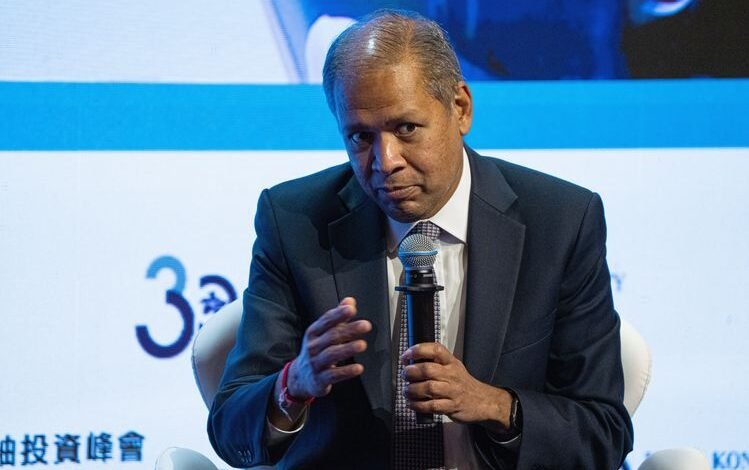Barclaysâ investment bank has been given another chance to prove its worth

Barclaysâs investment bank has dodged a bullet â again.
For years, many investors and analysts have had the investment bank in their sights. It was a drag on the share price they said and should be cut back, or even spun out, so the group could focus on its more profitable retail operations.
With returns from the investment bank faltering, chief executive C.S. Venkatakrishnan, last October promised to deliver a restructuring that would address its underperformance.
The word is that Venkat and his team did consider fairly radical cuts. But on 20 February, Venkat announced a reprieve, declaring: âWe like the investment bank as it is.â
READÂ Bramson gets his timing wrong on Barclays investment
Given the scepticism among investors, you might think that such comments would go down very badly. Yet the share price closed up almost 5% on the day. This largely reflected very bullish forecasts for the group and updated commitments for capital distributions to shareholders.
And, in truth, the investment bank is not being let off as lightly as it might seem. The plan involves the investment bank maintaining roughly the current level of risk-weighted assets over the next three years.
Taking into account inflation and the impact of the Basel III rules, this will involve a significant reduction in the effective amount of capital the investment bank has to play with. Its share of group risk-weighted assets is projected to fall from 58% last year to 50% in 2026.
Still, that compares with the equivalent figure of only 25% that UBS is targeting after its acquisition of Credit Suisse. âWe donât feel the need to take any of the more drastic actions that others have taken,â said Venkat, presumably referring to UBS.
Barclays will not withdraw from any product areas, not even marginal businesses like trading municipal bonds in the US, where the mighty Citigroup is throwing in the towel. Nor will there be a systematic cull of less profitable clients. Adeel Khan, now sole global head of markets, did, however, say that individual clients would be assessed to establish whether they were generating the right mix of revenue for the capital allocated to them â which could amount to much the same thing.
Barclays announced plans for £2bn of cost cuts over the next three years, following £1bn last year. The investment bank is expected to bear a large proportion of the cuts but the company would give no indication about the size or location of future job losses.
Some critics have suggested that on the banking side Barclays should cut back in equity capital markets and M&A advice where it is relatively weak. But Venkat is proposing exactly the opposite â planning to expand in equities and M&A because these are less asset intensive than debt capital markets.
Return on assets is the critical metric for the investment bank where return on tangible equity has fallen from 14% in 2021 to a meagre 7% last year. The aim is to get it back above 12% in 2026, partly by allocating more assets to high return businesses such as lending to large companies (which is being folded into the investment bank) and the provision of financing to investor clients for hedging and arbitrage.
This has been a big growth area for Barclays and one that Venkat argues has made its trading revenues less volatile.
READÂ Why Europeâs biggest investment banks are cutting costs a year after Wall Street rivals
Barclays is projecting that income from its markets businesses will rise 15% from £7.2bn over the next three years and that banking fees and income from its international corporate bank will increase 18% from £3.8bn in 2023. Some analysts view those figures as pretty punchy but Barclays insists they are based on conservative assumptions about Barclaysâs market share and normalisation of the industry wallet after the wild swings of recent years.
In common with pretty much all its rivals, Barclays talks about getting bits of the investment bank working better with others, selling more investment banking services to its markets clients and nice stable transaction banking services to all of them. How much of that is built into its forecasts is unclear.
In many ways, Barclaysâ investment bank has performed well in recent years, building market share and consolidating its position with the most lucrative clients. It has had heavy investment, particularly in technology in the markets business and in people in banking.
It is not crazy for it to suggest that it should now start to see the payback from those investments and from a shift in resources to higher-return areas. Whether it will be able to meet the projections is another matter.
And one thing is not really in doubt. If it disappoints over the next couple of years it is unlikely to dodge the bullet again.
To contact the author of this story with feedback or news, email David Wighton
Source link




